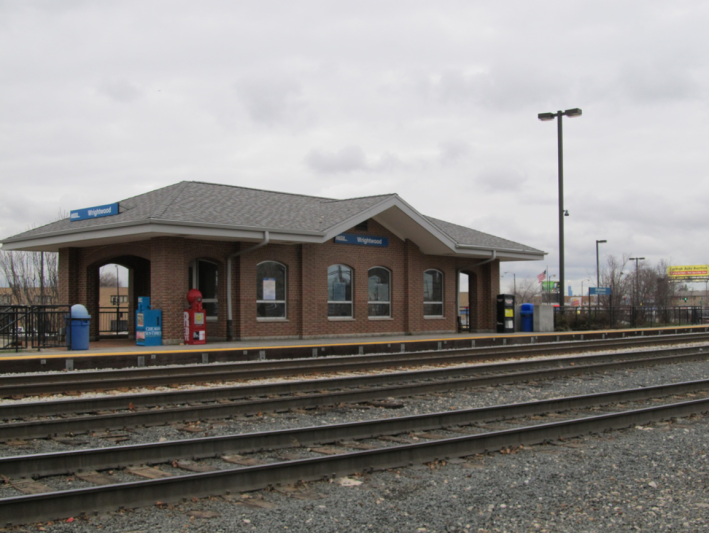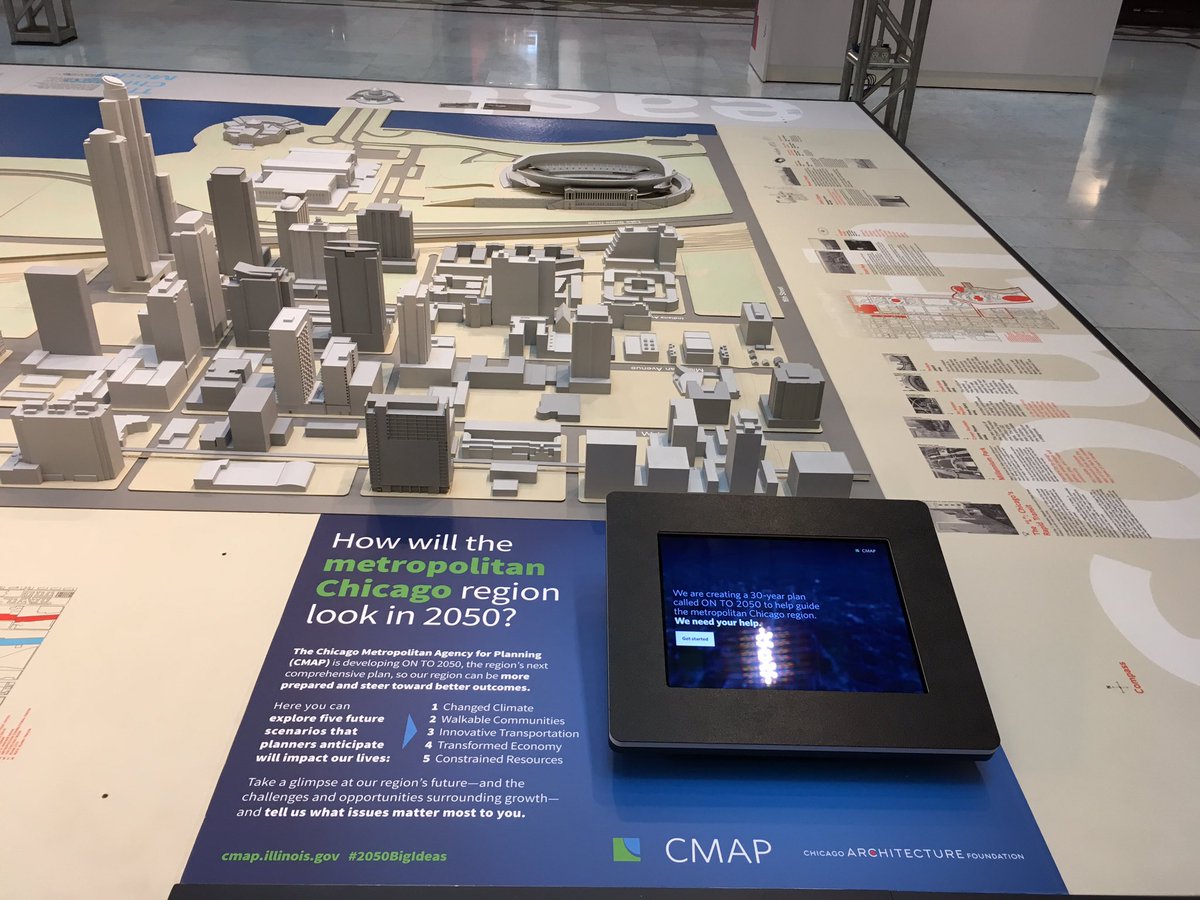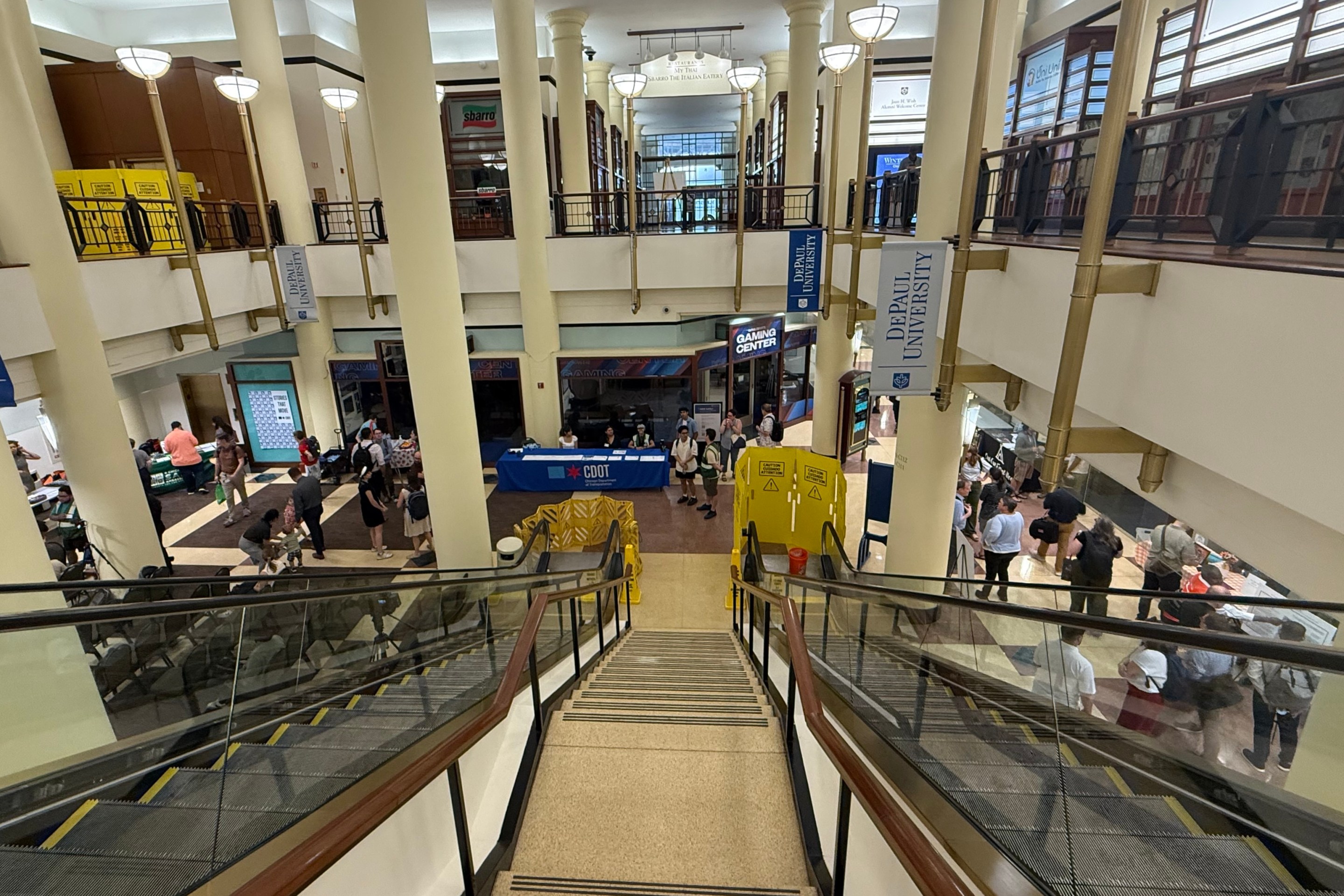This morning the Chicago Metropolitan Agency for Planning board approved ON TO 2050, a new comprehensive regional plan that will guide its transportation and community development priorities for the next 32 years.
Like the GO TO 2040 plan before it, this plan sets CMAP’s goals and outlines where it will spend its money and resources. While many aspects of the plans are similar to its predecessor, ON TO 2050 adds several new priorities. It commits to supporting projects in historically underserved communities – something that CMAP officials said would actually benefit the entire Chicago region. And, mindful of ever-decreasing federal and state transportation funds, the plan calls using a combination of expanding the sales tax base and reducing expenses to generate revenue necessary to maintain and expand the region’s transportation infrastructure
During an October 5 press briefing, CMAP executive director Joseph Szabo explained that promoting “inclusive growth” – where communities of all sizes and income levels benefit – was a major priority of the planning process. “[CMAP’s] analysis shows regions that are more inclusive have longer, stronger periods of prosperity and shorter periods of stagnation,” he said.
A major aspect of the strategy, Szabo said, is doing more than just determine how to improve transportation access from underserved areas to job sites in other parts of the region. It's to figure out how infrastructure can be used to encourage more investment and more businesses to come to these communities.
Another major priority is “resilience” – so that infrastructure and the communities it serves can endure both expected and unexpected changes. That means helping communities get infrastructure projects off the ground and pushing for more stable local revenue sources. Szabo said that factors such as decline of brick-and-mortar stores means that sales taxes don’t generate as much money as they used to. And because state and federal funding has been declining, municipalities are more reliant on local funding than ever.
CMAP estimates that Chicagoland would need to spend at least $55 billion over the next 32 years to not only bring the current infrastructure to a state of good repair, but also expand and improve it.
To help accomplish that, CMAP is launching a capacity-building program. As the plan notes, there are communities that may have good plans, but there may be something – for example, a lack of resources and staff – that prevents them from making the plans a reality. Szabo explained that CMAP received $500,000 from the MacArthur Foundation and $200,000 from the Chicago Community Trust to help address that.
“We’re really looking toward to putting together a comprehensive program and going into higher-need communities,” he said. “We’re talking about embedding staff in there for up to a couple of years.”
Szabo said that the idea is to help local leaders get the skills and resources needed to continue doing projects on their own.
Jesse Elam, CMAP’s director of policy and programming, further discussed some of the other ways the plan looks to help less well-off communities, especially communities with large minority populations. He noted that federal transportation grants usually require a local match, which can be tough for less wealthy communities to budget.
“We want to makes sure that communities that have hard time coming up with this match, that we can cover it for them,” Elam said.
He added that, when when CMAP evaluates grant applications in the future, 10 percent of the score will hinge on whether the project serves lower-income and/or minority communities.
When asked for specific examples of changes to the local taxes CMAP is advocating, Elizabeth Schue, the agency’s principal policy analyst, mentioned broadening the sales tax base.
“Right now, we’re very reliant on sales tax revenue from small sets of goods,” she said. “And that’s different from our neighboring states.”
Szabo also mentioned taxes on more services.
“A great [example] is getting your tree cut down,” he said. “Tree cutting service – if you’re in Wisconsin, you have to pay a tax on it. In Illinois, you don’t.”
When asked about CMAP’s position on graduated income tax, Szabo responded that the agency doesn’t have any specific recommendations on the matter. CMAP board chair Gerald Bennett said that he didn’t think it was “too far outside the box,” adding that it’s one of many ideas that may be worth exploring.
Szabo also mentioned that CMAP recommended revamping Cook County’s property tax structure.
“It is the only county in region that has a three-tier assessment process, or should I say rate – one for industry, one for retail and one for homeowners,” he said. “And there are clear signs, particularly in the south suburbs, that it [leads] to the loss of industrial jobs.”
Bennett added that CMAP would also recommend more consolidation and resource sharing between various governing bodies throughout Illinois in order to reduce costs.

Recommended Projects
As Szabo explained, given current funding issues, the plan prioritizes maintaining, repairing and improving existing infrastructure. And, indeed, most of the projects the plan supports – both roads and transit – fall into that category.
The plan supports the CTA's Red/Purple Modernization project and the long-discussed Red Line extension to 130th Street, describing the later project as a “cost-effective” way of increasing ridership and the line's capacity. The plan also recommends increasing capacity on the Blue Line and refurbishing and modernizing the line's Forest Park branch. The plan also encourages the CTA and the city of Chicago to continue developing bus rapid transit routes
For Metra, the plan recommends making track, signal and bridge improvements to the BNSF and Milwaukee District West and Rock Island lines, and all three Union Pacific lines, in order to increase capacity and address deferred maintainance. On the BNSF Line, it also recommends building a new station in Naperville, among Eola Road, relieving crowding at the city's two existing stations. On the Union Pacific-Northwest Line, it recommends expanding the Ridgefield station on the main line, extending the McHenry branch to Johnsburg, and adding an intermediate Prairie Grove station. The plan notes that the new stations, combined with new feeder bus service, would increase ridership. And on the Southwest Service line, the plan recommends a long-discussed track improvements that would allow it to use the currently underutilized LaSalle Station, relieving some of the congestion at the Union Station.
The plan notes that while bike and hiking trails don't count as regionally significant projects, CMAP supports the Northeastern Illinois Greenways and Trails Plan, and takes it into account when it comes to its grant decisions.
CMAP officials emphasized that the agency did a great deal of community outreach when creating the plan, collecting input from about 800,000 Chicagoland residents.
![]()
Did you appreciate this post? Consider making a donation through our PublicGood site.





